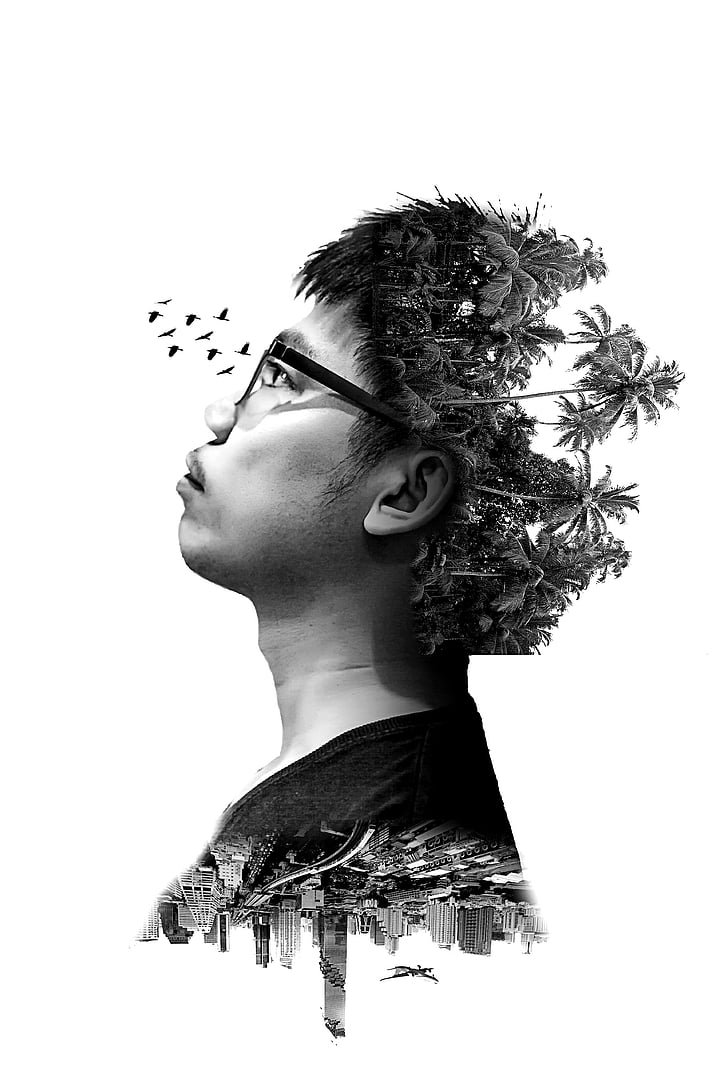Centering our Humanity
Leading in an Age of Digital Transformation
by Sofia Sayabalian
Lead How?
When we think of leadership, perhaps we think of individuals who seemingly occupy a lot of space in any given arena–the shiny politician, the savvy entrepreneur, or the benumbed billionaire. But what if we thought of the concept of leadership as part of a greater evolution, an extension beyond oneself and the individual?
Photo: StockSnap
Instead of simply leading a team, leadership means occupying a growing helix, where ideas, behaviors, precedents, and norms result in a conscious working effort that the individual – the leader – makes for others. This is a kind of disciplined leadership that remains paradoxically formless. A leadership that inspires others to reach a greater potential in themselves. It is one that sees the passage of time as an ally, where trading space for time ultimately unveils authenticity and character.
We can think of change in an organization as a passage of time, too. An unhelpful entity that essentially bogs the brain down with stress is known as time pressure. The pressure of things like deadlines, projects, and busy work; very real in our world today, and “in a lurking fashion,” can get in the way of helping teams be more innovative, effective, and productive.
Healthy leadership cannot exist without the preface of adaptability. We live in an age of digital transformation and rapid change; and as we continue to see an influx in remote and hybrid work environments, we’re acknowledging our need for human-centered leadership that cooperatively aims to collate emerging technologies and leadership as we know it.
Below I present strategies, reminders, and practices that can effectively guide adaptive leadership in a quickly changing landscape. As a scholar in the Communication Leadership program at the University of Washington, I’ve been grateful to engage in coursework focused on leadership practices in our technological age. What I’ve deemed paramount thus far is more than ever today, humans crave social and emotional experiences.
This reflects raw desires stemming from our human nature – and we cannot re-engineer human nature. In understanding this, we can lead with values centered around creating greater wellbeing in the world and provide meaningful experiences for others as we seek to make a positive difference in the canvas of complexity that constitutes our world.
Attitude, Change, and Resiliency
There are various kinds of leadership styles, ranging from transformational and democratic, to servant and coaching leaders. Each of these styles are unique in their own way, but the essence of all of them is tied to how the leader carries themselves as an individual outside of the team or organization they are leading.
A leader’s attitude and way of viewing the world influences qualities they integrate onto their team. Leaders open to change, experience growth through the challenges they encounter in life. They are not bound to a kind of tunnel vision but rather adhere to a “funnel” vision which looks at situations in the larger context they exist in and considers the possible ramifications of any action they may take. Funnel vision holds space for creativity’s natural ebb and flow; it narrows the focus just enough to create room for innovation and strategic decisions.
Photo DevianArt
Challenging situations are inevitable. But when a challenge appears as an opportunity to practice learning agility, we can lessen the resistance to taking on challenge. Learning agility understands that we gain knowledge from positive, negative, and otherwise neutral experiences. Along the same vein, we welcome the concept of dual awareness, which is the integration of internal circumstances (experiences, thoughts, emotions, and responses) and external ones (an objective reading of the situation and what it calls for).
Having dual awareness is a skill that benefits a team because it takes a selfless approach when thinking about the right course of action. Dual awareness requires emotional self-regulation and favors taking a step back and looking at the wider context, rather than immediately reacting. It discerns the disparity between mere reaction and thoughtful response. Responding reflects a deeper comprehension cultivated through two-way communication as opposed to responding from fleeting emotions, which risks serving solely one's own agenda.
We must also remember to show a sense of humanity as a leader and develop a sense for when we should tap into our emotional, compassionate selves. We can be a determined scholar of human nature and understand the “laws” that drive so much of our behavior (i.e., behavioral economics, psychosociology, etc.), but life and the essence of humanity goes beyond these laws. We are predictable only to a certain extent and there will always be ways our fellow human beings surprise us. This is why even the most groundbreaking and intelligent technology systems can never truly replace the human element of being.
Trust and Shifting Our Mindset
Shifting our mindset is not something that happens overnight, but with intentionality and consistency, it is possible. A “mindset” is a set of beliefs that shape how you make sense of the world and yourself. As humans, we tend to believe that we have objective knowledge of the world and that our reality is more or less the same for others. However, this is a deceptive illusion.
Phot0: PickPik
Our perception constructs a personal reality distinct to each of us. Each individual perceives and interacts with the world uniquely. Recognizing this fact is pivotal to comprehending human nature. If we understand what makes our mindset “set” and how the frame of mind we adopt to view the world around us is malleable, we can enhance our overall experience in the world by choosing frames that enable us to appreciate diversity, be curious about the world around us, and employ compassion towards others.
Consider the example of trust. A natural form of trust blossoms in interpersonal relationships when there is a common understanding among individuals that their realities are different, and these differences are valued and respected. This is where empathy and compassion can bloom and be sustained.
We can build trust when speaking with others in many ways. We can reflect what they’re saying back to them, showing that we value and want to ensure we understand what they are saying. We need to have trust in others and ourselves to flourish brightly. When we work to adopt a positive frame of mind as we engage with others, our actions invite them to do likewise, creating a space for the best parts of humanity to shine.
Inclusivity and Being a Harborer of Change
Research suggests a cluster of six signature traits that characterize an inclusive leader. These are 1) Visible commitment exemplified in genuine dedication to diversity, challenging norms, and holding others accountable; 2) Humility seen through modesty about capabilities and mistakes and creating space for others to contribute; 3) Awareness of biases and the ways they may personally contribute to systemic issues; 4) Curiosity about others and actively seeking to empathize and understand those around them; 5) Cultural intelligence exemplified through careful discernment of others’ cultures; and 6) Effective collaboration through the empowerment of others and a focus on diversity of thinking and psychological safety.
Photo: This image was created using Artificial Intelligence.
We need leaders with the traits above to create the kind of world we want to see – one that cares for the natural world around us and works towards the flourishing of all beings. Various factors – social, technological, economic, environmental, and political determinants – influence future scenarios.
The rise of emerging technologies and artificial intelligence continues to insert influence while also highlighting gaps in our culture. There is an added value to humanity through these technologies, but a human-centric framework must still be adopted wherever the technology takes us.
Maya Angelou once said, “If you don't like something, change it. If you can't change it, change your attitude.” We can be harborers of positive change in our lives and in others.’ And our sense of adaptation, a trait that has sustained humanity for eons, reflects our innate ability to respond to change. With the right mindset and boundless willpower, we can reach for the stars together in this short lifetime.
Header Photo: Daniel Coe CC BY NC ND 4.0 Deed






